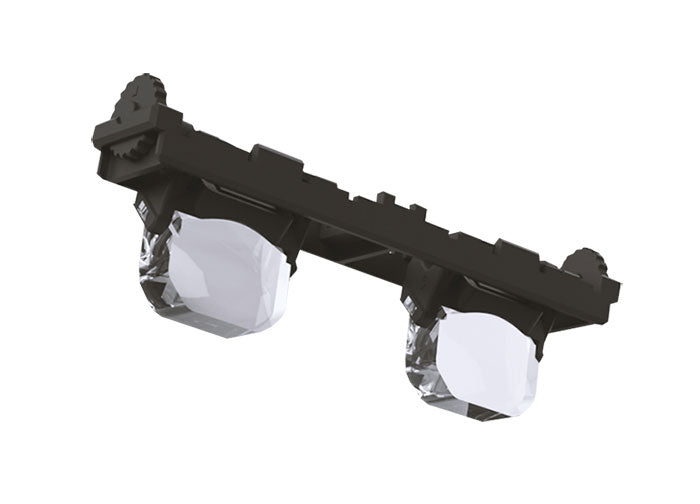
AR/VR glasses price will come down in the near future
Recently, BOE's 0.39 inch FHD 5644ppi OLED display was successfully lit up and is expected to be mass-produced at the end of August 2019. This is BOE's micro-display specially developed for AR. Does the mass production of this product mean that AR glasses will usher in a new era of price reduction?

The composition and main cost of AR glasses
The cost of AR glasses can be divided into optical display module, image acquisition module, computation module, communication module, power module and structure module. Optical display module components account for 50 percent or more of the cost of glasses.
Optical display module is the core component of AR glasses, which is equivalent to the screen of mobile phones. AR glasses are devices used for near-eye display, in order to make the virtual image better overlay with the real scene without affecting the judgment of the real world. AR glasses have increasingly higher requirements on display modules in terms of lens thickness, field Angle and overall quality, among which resolution, brightness and contrast have become the factor that the industry must pay attention to.
The optical module consists of a miniature display, optical lenses and fixed components. At present, AR screens are divided into 5 categories, which are Lcos, OLED, DLP, micro-led and laser projection. The first three are the current mainstream, with the price ranging from 60 to more than $200.The advantage of the LCOS screen is high brightness, but the disadvantage is low contrast. If you want the best display effect, it's OLED. However, OLED solution is currently suffering from SONY's delivery time and price problems, many manufacturers are balking at this. According to industry sources, SONY lenses account for more than 50% of consumer grade AR products.

Mass production of China-made screens is just around the corner
On July 9, 2019, BOE's 0.39 inch FHD 5644ppi was successfully lit up and is expected to be mass-produced by the end of August. Another company, Shiya Display, announced on July 9th that two of its own silicon-based OLED displays had been successfully lit.
“The screen is only suitable for AR. Currently, we layout in the 8-inch Micro OLED production line, and the mass production volume reaches K level. Compared with other micro-display solutions, our products have high contrast, high color gambit, no need for external light source, and small dimension.” Said BOE insiders.
For hardware manufacturers in the AR industry, the arrival of china-made OLED micro-displays will be a good news. It is understood that most domestic AR manufacturers OLED products come from SONY. However, due to the high screen price of SONY, the cost of AR glasses remains high to some extent.
Comparing with SONY's 0.39 "OLED, which has 1024×768 resolution and 4:3 Aspect Ratio, BOE's display has 1920×1080 resolution and 16:9 Aspect Ratio.
Two silicon-based OLED display screens developed by Seeya Technology are lit up at the same time on July 9. According to Seeya declaring, one of them is currently the world's largest, highest-resolution silicon-based OLED display. The display screen is 1.03 inch, with Real RGB 2.5k × 2.5k resolution, over 3500 PPI and 3000 nits brightness. At the same time, Seeya has also developed a 0.72-inch product with a 1920×1200 MIPI interface.
In fact, SONY's screens were originally designed for supply camera viewfinder, not for AR. But BOE and Seeya's screens targeted the AR market. It is predicted that BOE’s screen price will be much lower than SONY. It will greatly reduce the price of AR glasses once these screen launching mass production.

Market role of AR glasses
Based on the cost composition of AR glasses, its product price remains high. If it is possible to reduce the main cost, the AR glasses will reach general consumers really.
The extension screen of the mobile phone is probably one of AR's best role. In the past, AR product design tends to be more complex applications, such as spatial positioning and gesture recognition. However, AR glasses based on consumers can not be limited to several content scenarios, but can be used or consumed by consumers at any time. For example, AR is now used to be accessories for mobile phones. Watching video, playing mobile game and working can free people's hands. It will change your cell phone habits.
With the arrival of 5G, AR glasses, as the extension of 5G mobile phone, the mobility, ultra-high resolution, and immersive experience will truly open the channel of AR glasses to flourish.
